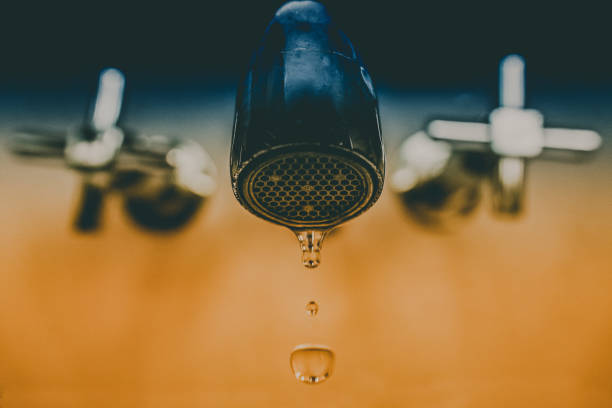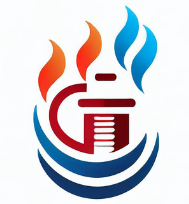There’s nothing more frustrating than turning on your hot tap and getting little to no water coming out. This common plumbing issue has many possible causes, ranging from frozen pipes to faulty valves and blockages. Before calling a professional plumber, it helps to understand the potential reasons your hot tap isn’t working.
Before we dive into the potential causes and solutions, let’s briefly examine the core problem of no water coming out of the hot tap. This issue can manifest in different ways, such as:
- Complete Loss of Water Flow: You turn on the hot tap, but no water comes out at all.
- Intermittent Water Flow: The hot water flow is inconsistent, sometimes functioning, and sometimes not.
- Insufficient Hot Water: You might experience a reduced flow of hot water, which is not adequate for your needs.
This article will outline the main causes and solutions related to getting no water from your hot tap. We’ll cover things you can try yourself, as well as when it’s best to call in an expert. Getting your hot water flowing again quickly is important for daily household tasks and your peace of mind.

Possible Causes
There are several potential culprits when you have no water coming out of your hot tap. Here are some of the most common causes, along with steps you can take to diagnose and address the issue:
Frozen Pipes
One of the most likely reasons your hot water has stopped flowing is frozen pipes. Cold weather can cause the water inside your pipes to freeze, forming a solid blockage that prevents water from getting to your tap. Check if your cold water taps are also affected – if so, frozen pipes are almost certainly the issue.
To confirm, locate the hot water pipes (often in unconditioned spaces like basements or attics) and check if any sections feel ice-cold to the touch. You may also see visible ice. Use a hairdryer to gently heat the frozen sections to thaw them. Don’t use open flames which can damage pipes!
Leaks
Leaks in your plumbing system can reduce water pressure and cause hot water to stop flowing. Check around your home for signs of water damage like damp spots on walls or ceilings, dripping from pipes, or mold growth. The issue may be a small leak you can’t see.
Turn off all water at the main valve then check your meter – if it’s still running, that indicates a leak. Call a plumber to identify and repair the leak points.
Blockages
Buildup of sediment, limescale, or other debris can block pipes and restrict water flow. This tends to happen more with hot water pipes due to the mineral deposits left behind as hard water is heated.
A partial clog may reduce water pressure while a complete blockage stops flow entirely. Flushing your water heater and pipes can help clear out buildup. If you still have no hot water after flushing, there may be a stubborn obstruction requiring pipe inspection.
Faulty Parts
Malfunctioning components like valves and washers can prevent hot water from reaching your tap. On a shower or sink, examine the faucet for worn washers and gaskets which may need replacement.
For an entire hot water system issue, the problem could be within your water heater or boiler. Faulty temperature/pressure relief valves are common in heaters. Boilers may have stuck diverter valves. Call a plumber for inspection and repair.
Water Pressure Problems
Inadequate building water pressure, damaged supply pipework, and leaks can all cause pressure drops that affect hot water flow at taps.
Check your home’s water pressure by attaching a gauge to an outdoor spigot. Pressure below 30 psi may have issues delivering hot water upstairs. If pipes clang and hammer when taps are shut off, that often indicates excessive pressure.
Consult a plumber to identify and address the pressure problem if it persists after leaks are fixed. They can install pressure regulating valves and water hammer arrestors.
With some diligent diagnostics and plumbing knowledge, you can hopefully track down the reason your hot water won’t flow. But don’t hesitate to call a professional if you’re unable to determine the cause or make repairs yourself.
Solutions
Once you’ve diagnosed the reason for no water coming from your hot tap, here are some potential solutions and fixes:
Contact a Professional Plumber
If you’re unable to determine the exact cause of the issue or don’t feel comfortable making repairs yourself, contact a plumber. A licensed pro has the expertise to fully diagnose problems and fix them properly.
They have the right tools to inspect pipes, check for clogs and leaks, test components, and make necessary repairs. This table compares DIY vs pro repair:
| DIY Repair | Professional Repair |
|---|---|
| – Cheaper upfront cost | – More knowledgeable about plumbing systems |
| – If successful, quick fix | – Higher chance of fully resolving issue |
| – Risk of misdiagnosing problem | – Access to specialized tools and equipment |
| – Possibility of incomplete/faulty repair | – Experience detecting hidden problems |
| – Safety issues working with water/gas lines | – Ongoing maintenance and service plans |
Consider calling a plumber if you lack the skills, time, or ability to safely make repairs yourself.
Adjust Thermostat Settings
If you have no water from any hot taps, check your water heater’s thermostat. Make sure it’s set to at least 120°F. Higher temperatures increase risk of scalding but may be needed to deliver hot water properly upstairs or far from the heater.
Also check that any timers or temperature limiters are working correctly. Reset to factory settings if unsure. Adjust per your manual but don’t set too high.
Reset Water Heater
Turning your water heater off and on can sometimes clear up minor operation glitches. Locate the circuit breaker or control panel and shut off power completely. Leave off 1-2 minutes before restoring power.
For gas heaters, ensure the pilot light is on by pressing the ignitor button. The heater may need to run through a fire-up cycle. Check hot water flow in 10-15 minutes after resetting.
Clear Clogged Pipes
Flushing your water pipes helps remove accumulated sediment and minerals. Attach a hose to drain valves and direct into buckets to catch flushed debris. Open valves fully and let water run until it clears.
For stubborn clogs, use a plumber’s auger or drain snake. Don’t use harsh chemical drain cleaners with a sink plunger – this can damage pipes. Proper flushing improves pressure and water flow.
Fix Leaky Faucets and Pipes
Inspect plumbing fixtures like faucet aerators and showerheads for flow restrictions and clean or replace them. Examine all connections and supply lines for leaks and re-tighten fittings as needed.
Use pipe sealant tape or joint compound on stubborn leaks. For larger leaks in the hot water system, call a plumber to identify and solder or replace ruptured pipes. Prevent future leaks with routine maintenance.
With some perseverance and plumbing know-how, many hot water flow problems can be addressed without professional help. But for complex or high-risk repairs, don’t take chances – hire a licensed pro.
Conclusion
Having no water come out when you turn on your hot tap can definitely be frustrating. But in many cases, the fix may be easier than you think. As we’ve covered, common culprits include frozen pipes, worn washers, stuck valves, clogged drains, and leaks – issues you may be able to resolve yourself.
Of course, some problems like severe pipe damage or malfunctioning water heaters require professional repair. Don’t take risks trying to fix those yourself. The key is to correctly diagnose the issue first. Check if it’s isolated to one tap or affects your entire hot water supply. Thoroughly inspect your plumbing system. And don’t forget simple solutions like resetting water heater temperatures and pressure.
Taking the proper troubleshooting steps will get your hot water flowing again quickly. Plumbing systems benefit greatly from preventative maintenance too – have a plumber inspect annually. If your hot water won’t run at all, contact a licensed pro right away for the fastest solution. With the right knowledge and preparation, a lack of hot water doesn’t need to disrupt your household routine.
FAQs (Frequently Asked Questions)
Q: Why is there no hot water coming out of my tap?
A: Several reasons can cause this issue, including a faulty diverter valve, airlock in the system, frozen pipes, low water pressure, blocked pipes, faulty thermostat, or ignition problems.
Q: Can I fix a diverter valve myself?
A: If you have experience and knowledge, you can attempt to fix the diverter valve yourself. However, it is recommended to seek professional assistance to avoid further damage.
Q: How do I increase water pressure in my boiler?
A: Check your boiler’s manual for specific instructions. In general, you can increase water pressure by locating the filling loop and turning the valves until the pressure reaches the desired level.
Q: Is it safe to thaw frozen pipes with boiling water?
A: No, using boiling water to thaw frozen pipes is dangerous and can cause damage. Always use gentle heat sources like warm towels or a hairdryer.
Q: Why is my thermostat not working correctly?
A: A faulty thermostat might result from calibration issues or internal damage. Consider having a professional inspect and repair or replace it if necessary.
Q: How often should I bleed my heating system?
A: It’s recommended to bleed your heating system at least once a year to remove airlocks and ensure efficient water flow.
